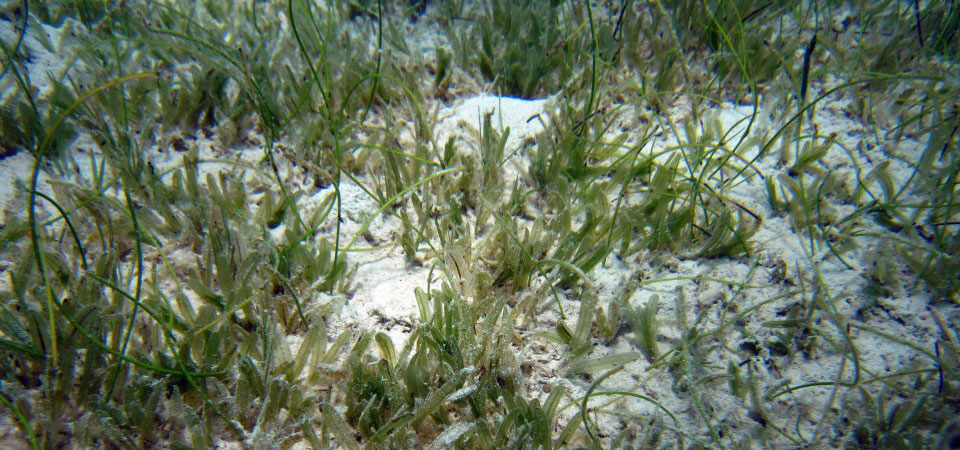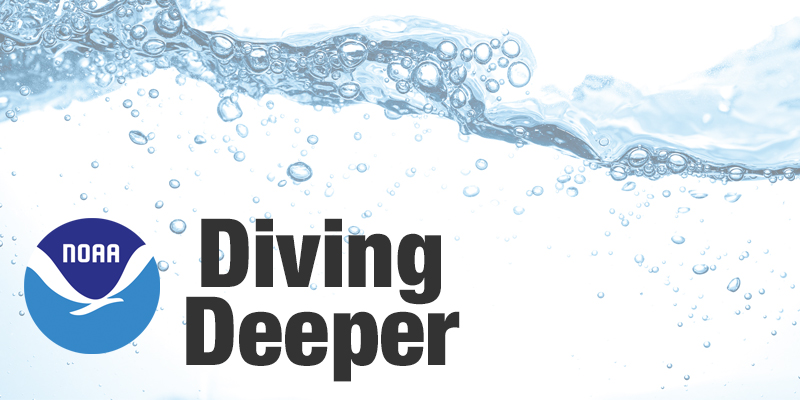Invasive Species
Ocean Shorts: Episode 14

Can you find the invasive species?
Did you know an invasive species can be a plant? In this photo, non-native seagrass species Halophila stipulacea (long, oval blades) is mixed with native Syringodium filiforme (cylindrical, spaghetti-like blades). This non-native seagrass is now found in the shallow waters of 19 Caribbean islands. It is native to the Indian Ocean.
Transcript
HOST: Welcome to Ocean Shorts where we revisit popular Making Waves and Diving Deeper episodes. I’m your host Kate Nielsen. Today, we’ll take a few minutes to explore invasive species. In February 2015, I was joined by Amy Uhrin, formerly with NOAA’s National Centers for Coastal Ocean Science, to talk about this topic.
Let's listen in.
HOST: Amy, let's just start off with the basics here first, what is an invasive species?
AMY UHRIN: That's a really good question Kate. There are some divergent perceptions on exactly what constitutes an invasive species, but most federal organizations follow a definition that goes something like this, it would be any living organism, it can be plant or animal, that is not native to the particular area under consideration, the species has been introduced or is non-native, and the species has a tendency to spread very rapidly, and can cause economic or environmental harm or harm to human beings or animals or other plants. So to be considered invasive, the negative impacts that are caused by the particular non-native species have to outweigh any benefits that that species may be providing in an area.
HOST: And Amy, I'm sure this varies for each instance, but can you share with us some ways that an invasive species might be introduced into an area?
AMY UHRIN: Sure, one of the major pathways for the introduction of invasive species comes through shipping, particularly ships that are crossing oceans. In their homeport, ships take on water, they take on ballast water, and that is to offset the way that the cargo of the ship is distributed throughout the ship, like a weight balancing game. But then when the ship crosses and gets to its destination point, that ballast water is typically just released from the ship into the waterway that it is transited to. So that is one of the major pathways of the introduction of invasive species.
Another way that species could be introduced is accidental or intentional releases from the aquaculture industry. So many aquaculture species, particularly many shellfish species are actually not native. So for example, here in the U.S., there are a lot of aquaculture facilities for Pacific oysters, so those oysters somehow spawn and the spawn escapes from a contained area, those species could be introduced accidentally.
Another common way people might hear about is the aquarium trade or people have particular fish species in their aquarium that they don't want anymore or are becoming a nuisance in the aquarium and they just release them into a local waterway.
Species can get here also by hitchhiking on marine debris. Particularly for some marine plants, just floating fragments can invade another area. And an interesting mechanism, and this is a mechanism how an invasive seagrass got to the West Coast of the United States and that was it was used in packing oysters from Asia that were sent over to the West Coast for aquaculture there and the seagrass seedlings and fragments in that packing material actually got released when the oysters were unpacked and that seagrass was able to invade parts of the West Coast of the United States.
HOST: That's all for today's Ocean Shorts. Thanks for joining us! For more information on invasive species, see our show notes for links. Be sure to tune in for the next episode.

Connect with ocean experts in our podcast series that explores questions about the ocean environment. Get ready to Dive Deeper!
Subscribe to Feed | Subscribe in iTunes